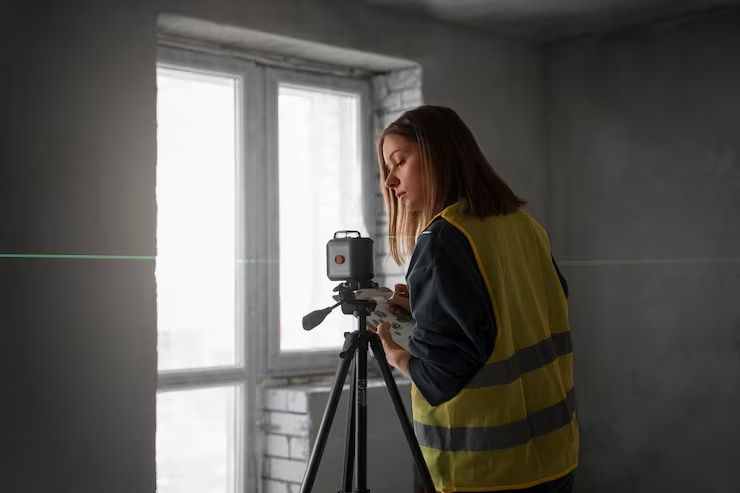Discover Pipe Laser Application: Guide, Knowledge, and Helpful Details
Pipe lasers are precision instruments used in construction, civil engineering, and infrastructure projects to ensure accurate alignment of pipes, tunnels, and drainage systems. They exist because traditional alignment methods often lack the precision required for modern infrastructure needs. A pipe laser projects a highly visible laser beam, usually red or green, through a pipeline or trench, giving workers a straight and accurate reference line.
They are widely used in applications such as stormwater drainage, sewer installation, and utility construction. The ability to maintain precise slopes and alignments reduces errors and enhances efficiency on the job site.

Importance
Pipe lasers play an important role in today’s infrastructure development. Their benefits and relevance include:
-
Accuracy: Ensures proper pipe slope and alignment, which is crucial for water flow and drainage.
-
Time-saving: Reduces rework by offering clear reference points from the beginning.
-
Safety: Helps minimize errors that could lead to leaks, collapses, or costly repairs.
-
Versatility: Can be used in pipelines, culverts, tunnels, and large-scale civil engineering projects.
The people most affected include engineers, contractors, surveyors, and government infrastructure planners. By solving alignment challenges, pipe lasers contribute to long-term durability and efficiency in projects.
Recent Updates
Over the past year (2024–2025), pipe laser technology has advanced in several ways:
-
Green beam lasers (2024): These are increasingly popular because green light is more visible to the human eye, especially in daylight.
-
Smart connectivity (2025): New pipe lasers can now connect with smartphones and tablets for remote adjustments and monitoring.
-
Automatic self-leveling (2024): This innovation improves setup efficiency and reduces manual calibration.
-
Extended battery life (2025): Improvements in rechargeable batteries have made lasers more reliable on long projects.
-
Integration with GPS and BIM (2025): Some models now integrate with Building Information Modeling (BIM) and GPS systems, improving project accuracy and data collection.
These updates show how digital transformation continues to shape construction and surveying equipment.
Laws or Policies
Regulations affect how pipe lasers are manufactured, used, and certified. While these vary by country, several common frameworks apply:
-
Occupational Safety Standards: Agencies such as OSHA in the United States and HSE in the United Kingdom provide guidelines for laser use on construction sites to prevent eye injuries and ensure worker safety.
-
Laser Classification Rules: International standards (IEC 60825) regulate laser safety, categorizing pipe lasers into classes to indicate risk levels. Most pipe lasers fall within Class 2 or Class 3R.
-
Construction Codes: Local building codes may require certified equipment for pipeline alignment in water and sewer projects.
-
Environmental Policies: Proper use of lasers ensures minimal environmental disruption during large infrastructure projects, particularly in water management.
Governments worldwide are also promoting digital construction tools, which indirectly supports the adoption of advanced alignment instruments like pipe lasers.
Tools and Resources
Several resources make pipe laser applications easier to understand and apply in real-world projects:
-
Laser alignment calculators: Online calculators help determine proper slope percentages for pipe installations.
-
Mobile apps for slope adjustment: Many construction apps now integrate with pipe laser devices, allowing real-time adjustments.
-
BIM software platforms: Tools like Autodesk BIM 360 enable integration of laser data into larger project designs.
-
Manufacturer manuals and guides: Provide detailed instructions for safe setup, alignment, and maintenance.
-
Training courses: Online learning platforms and engineering institutes offer modules on laser surveying and alignment.
FAQs
What is a pipe laser used for?
A pipe laser is used to project a straight and accurate beam inside pipes or trenches to guide proper alignment and slope during installation.
Are green beam pipe lasers better than red beam ones?
Yes, green beam lasers are easier to see in bright conditions, which can improve accuracy and reduce eye strain for workers.
What safety precautions should be taken when using pipe lasers?
Operators should avoid direct eye exposure, follow laser safety classifications, and wear protective equipment if required by regulations.
How accurate are pipe lasers?
Modern pipe lasers are extremely precise, often accurate to within millimeters over long distances. This ensures reliable alignment in large-scale projects.
Can pipe lasers connect to digital devices?
Yes, newer models often feature Bluetooth or Wi-Fi connectivity, enabling control and monitoring through smartphones or tablets.
Conclusion
Pipe lasers may seem like specialized tools, but they are central to the accuracy and reliability of modern infrastructure. By providing precise alignment and slope guidance, they reduce errors, save time, and enhance safety in construction and engineering projects.
Recent innovations such as green beam visibility, smart connectivity, and BIM integration highlight how pipe lasers are adapting to the digital age. With regulations ensuring safety and accuracy, their use continues to expand globally.





